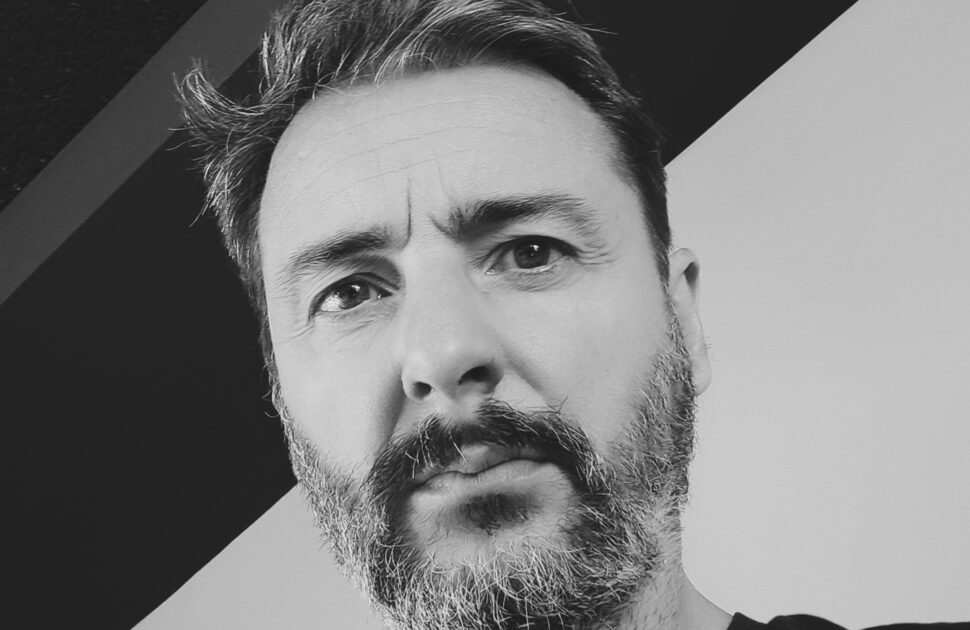
ALEXANDER COCCHIA
NAPLES 1972. Studied design and visual communication. Began career as a graphic designer and illustrator. Today he is an artist and creative director of Questionmark srl. He approaches art by studying the history of graphic design and visual communication forms. In 2001 he collaborates as an artist with Swatch by making a model in a worldwide collection. In 203 he wins the Golden Compass for the visual identity project of the Archaeological Superintendence of Pompeii. In the following years he wins various international awards in the field of design and communication. In 2000 he founded the PURP project, a “brand” that makes merchandising of art objects. Since 2008 he has been exploring and developing new forms of street marketing focused on art, and the projects Liotru d’autore in the squares of Catania were born; Art&More by GLO, the largest road surface mural (4,000 square meters) ever made in Italy, covering the Naples seafront for 300 meters in length; Muraria-il linguaggio-, for the Maggio dei Monumenti event, a 400-square-meter flat mural that boasts of being the first work of art monitored by satellites of the European Space Agency
PROJECT TITLE FOR SEMINARYSOGNINTERRA23
P-HOPE
How important is the past for imagining and building the future?
I cannot define a past and a future in art. I can imagine it for something that has a linear progression, a chronology precisely, for example, a life. But for art I can’t think of it that way. For me it is not a line but more a circumference, indeed a sphere, in which time is not an influential variable. It is a volume in which everything coexists, influences and is influenced by everything else. It changes little if in physical life it was realized a century earlier.
What are the elements you would like to/and work on further?
What I have always worked on: forms of communication. Because communication involves understanding. People are careless, uncaring, unwilling to understand the reasons for things, they stop at the surface. This is how the dramas of humanity arise, from ignorance and the inability to see beyond an action, a word or a gesture. I do not presume to do anything for humanity, but I do know that art can be a tool that can help make people think, more than standard “communication” can, because art is credible, it is authoritative, it is super partes, it is genuine, and it is often beautiful. People seek meaning in art, there is a predisposition to go beyond it, and I try to tell them seemingly simple things and do it while having fun (only condition:)
Tell me more about the work (for Seminaria.
Called P-HOPE, it is the first in a series, because hope can be many and change quickly. It moves along the contrast and manages to make sense of the unlikely and provocative cohabitation of the Pope with PeppaPig, because hope unites a child, an adult who is the Pope, an adult who is at war, and a child who is at war.
A project you haven’t been able to do, but would like to do?
More than a project a bet: we can say that I am part of that underground and indie world of art, outside the calculations of gallerists, coefficients and “official” art circuits. Much by choice and a little because many years ago I realized how unsuitable I was to walk the “art streets” in Italy and how impenetrable was the cultural barrier of those who managed art. Today I would like to break down that barrier, and I am doing so. Today that art is finally not monothematic and has often rebelled against its managers. Maybe it’s just my feeling but I think art is freer today. Today that web platforms sell more paintings than galleries. Today that new theories and art forms are raining from the sky, see the NFTs. Today that they have suddenly realized that with street art they can bring people back to museums. Today that a former manga cartoonist has become one of the highest-rated contemporary artists. Today I am getting that out of my system, without waiting for a gallery owner’s approval (I think they are dying out). When I can get one of my “non-works” into a museum then I will have accomplished my project and my provocation.
Your art “steals” from the pop and media culture in which we are all inevitably involved. The modern icons you use and blend oscillate between fictional characters and great world leaders . What led you to become interested in this kind of imagery? How much is there in your research that is assimilable to street-art?
In a sense this question has already been answered in the previous ones. I exploit the symbolic value and power of world icons and popular symbologies, whether they are taken from mythology, manga comics, cartoons, Neapolitan culture, Mexican culture, or real life I don’t care, it’s just nice to put them on the same level and make them dialogue. I assure you that they have a lot in common. That’s the power of imagination, it allows us to have a dinner between Amy Winehouse, Remi and Homer Simpson, where they discuss artificial intelligence. It would be cool, it would come out a nice message about the loneliness generated by social and technology.
I am not a street artist, although I have done many things on the street. My first lightning and inspirations came from looking at Haring and Basquiat. I take from one part of street art, the ability to give immediate and easy messages and to reach people. on the other hand it was born for that, then they distorted it by museizing it. But I put it on the same level as cartoons, comics and TG1. Don’t hold it against the cartoons.
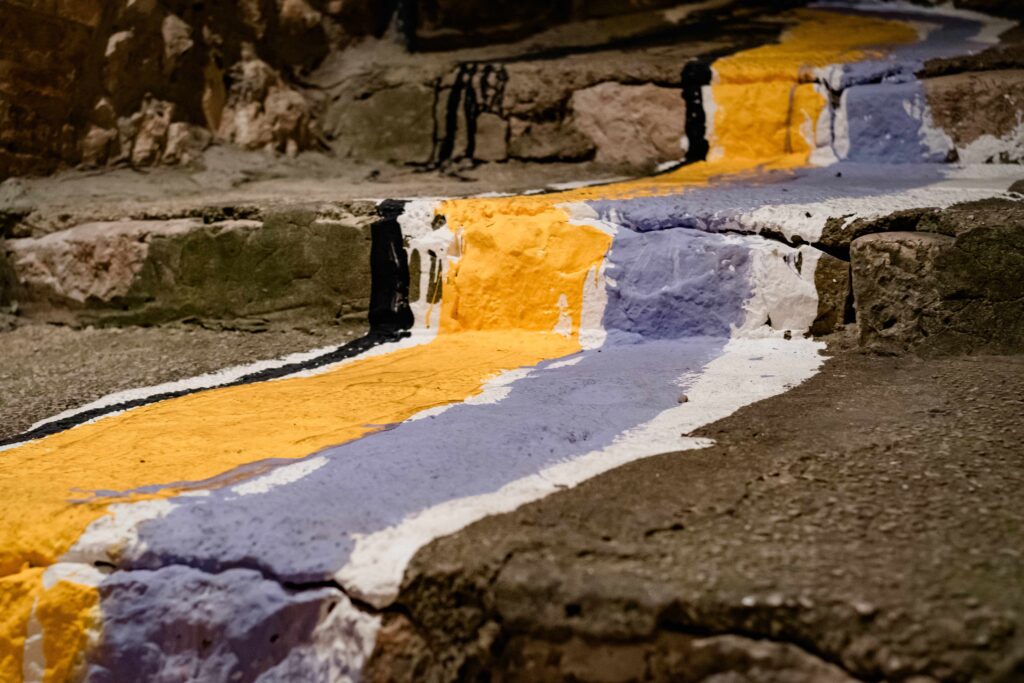
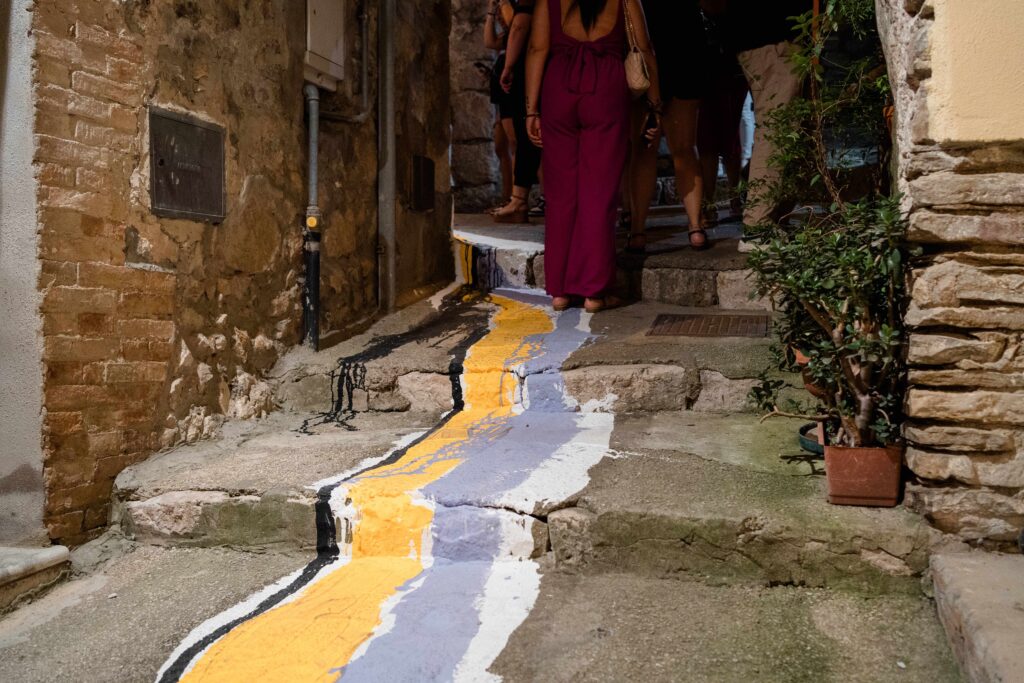

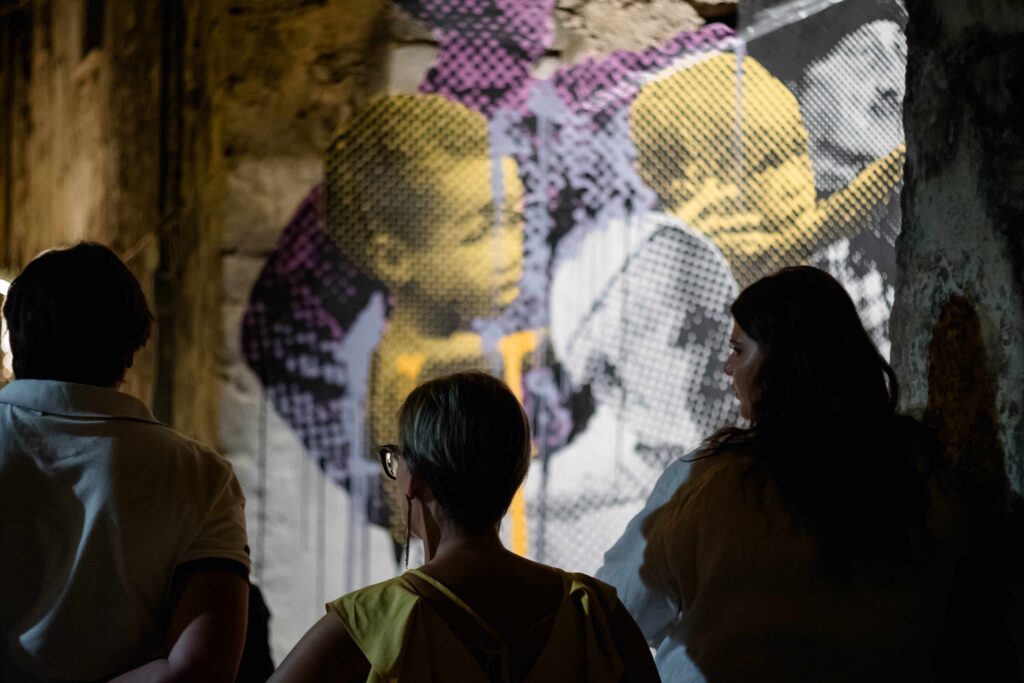
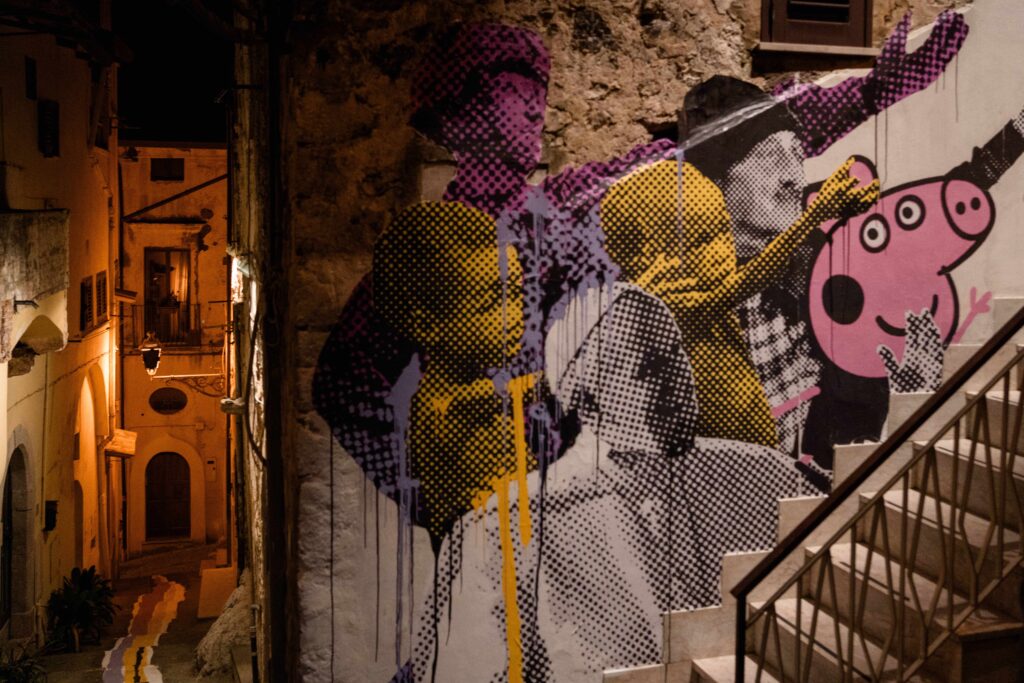
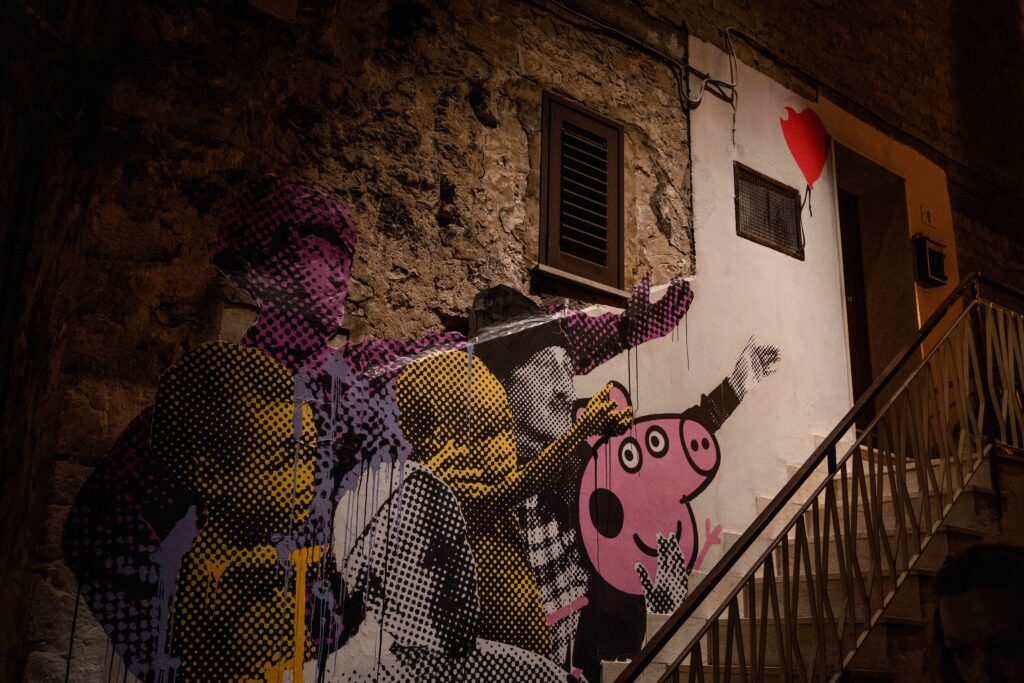
This post is also available in:
Italiano (Italian)
